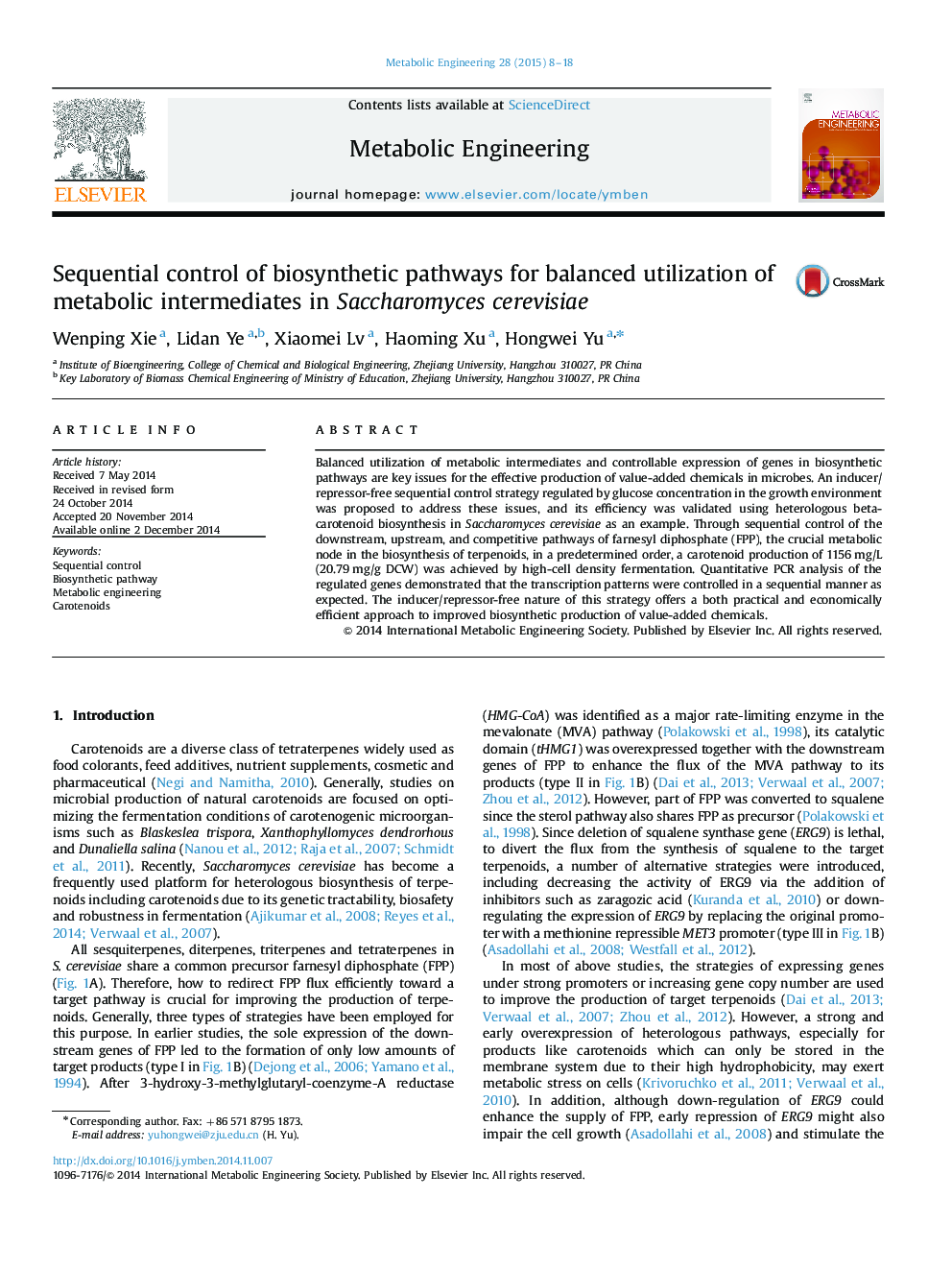| Article ID | Journal | Published Year | Pages | File Type |
|---|---|---|---|---|
| 6494438 | Metabolic Engineering | 2015 | 11 Pages |
Abstract
Balanced utilization of metabolic intermediates and controllable expression of genes in biosynthetic pathways are key issues for the effective production of value-added chemicals in microbes. An inducer/repressor-free sequential control strategy regulated by glucose concentration in the growth environment was proposed to address these issues, and its efficiency was validated using heterologous beta-carotenoid biosynthesis in Saccharomyces cerevisiae as an example. Through sequential control of the downstream, upstream, and competitive pathways of farnesyl diphosphate (FPP), the crucial metabolic node in the biosynthesis of terpenoids, in a predetermined order, a carotenoid production of 1156Â mg/L (20.79Â mg/g DCW) was achieved by high-cell density fermentation. Quantitative PCR analysis of the regulated genes demonstrated that the transcription patterns were controlled in a sequential manner as expected. The inducer/repressor-free nature of this strategy offers a both practical and economically efficient approach to improved biosynthetic production of value-added chemicals.
Related Topics
Physical Sciences and Engineering
Chemical Engineering
Bioengineering
Authors
Wenping Xie, Lidan Ye, Xiaomei Lv, Haoming Xu, Hongwei Yu,
